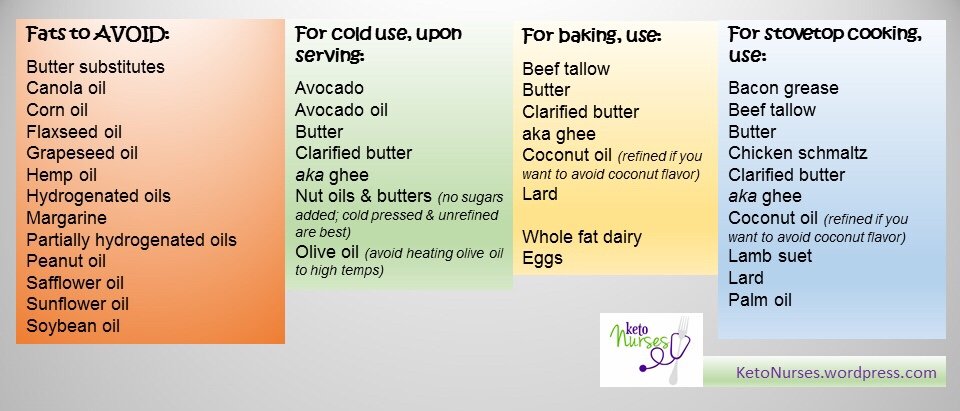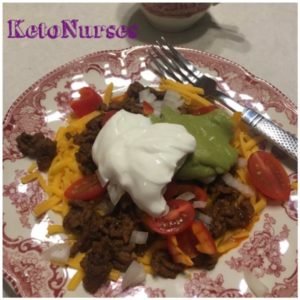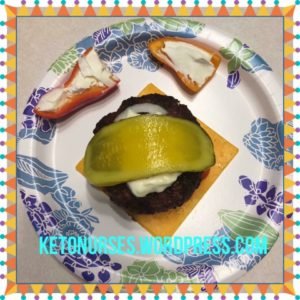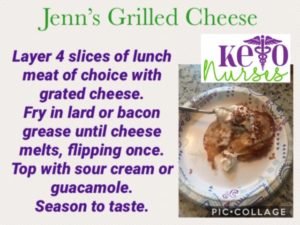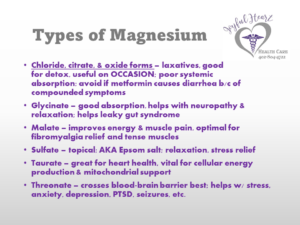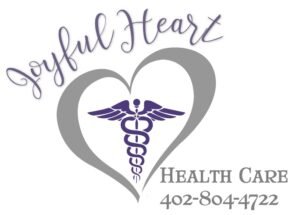One of the most common questions I am asked is, “well, what do you eat if you’re not eating carbs?” The answer seems easy, but I find that explaining it can be quite tricky and complex for a lot of the people with whom I share LCHF (low carb high fat) information. First, let’s start with a review of current dietary recommendations. If you look at the American government’s nutrition advice at “myplate.gov”, you’ll find a colorful plate that suggests half your plate be covered in fruits and grains and an additional serving of dairy off to the side. The rest of the plate should include vegetables and meat. Notice, there is no longer a place on this plate for fats. Over the past 50 years, more and more “experts” have recommended less & less fat intake over time, even though there is absolutely NO scientific evidence that supports that recommendation. In addition, the current dietary guidelines for people with diabetes recommend 45-60 grams of carbs per meal and 15-30 grams of carbohydrates per snack, with 3 meals and 2 snacks recommended; do the math. 45 grams x 3 meals = 135 grams; 15 grams x 2 snacks = 30; even on the lowest carbohydrate plan from the American Diabetes Association, that’s 165 grams of carbs per day. On the higher end, that’s 60 grams x 3 meals = 180 grams and 30 grams x 2 = 60, for a grand total of recommended carbohydrates PER DAY of 240 grams. When you realize the bloodstream only needs 4 grams of carbohydrates for a 24 hour period, you quickly begin to see why current dietary guidelines are failing our bodies and contributing to sickness all across our land. The body must use or store this excess energy; when it can no longer store any more glucose, it begins to make triglycerides from the excess carbohydrates or leave the excess inside the bloodstream, resulting in hyperglycemia, also called diabetes mellitus. SO, how many grams of carbs do we actually need? Another controversial response. While carbs have never been shown to be essential to body functions like proteins or vitamin C, most experts agree that having some carbohydrates is good, ok, or allowed. I typically recommend about 20 grams of carbs per day for most patients with glucose, insulin, triglyceride, or weight problems. People cutting carbs for general health’s sake can often tolerate up to 50 grams per day without significant health problems.
Mainstream medical providers will usually prescribe medications that will help lower glucose, but no medication will stop the progression of diabetes as long as an overload of carbohydrate continues. And there is NO medication to stop the “carbage” from going in our mouths. People who truly desire to reverse their diabetes or stop progression, at the very least, must significantly decrease carbohydrate intake. Many people immediately think of sweets, candy, cakes, brownies, and soda as high carb/sugar items and usually give them up immediately upon diagnosis of diabetes or insulin resistance. However, there is a much more complex event at work here, as all carbohydrates CONVERT into sugars like glucose or fructose – both of which are linked to a variety of chronic disease states, like insulin resistance and diabetes. So, what is considered a carbohydrate? What foods convert into sugars? All breads, tortillas, crackers, chips, beans, pasta, rice, corn, oats, quinoa, rye, and barley convert into GLUCOSE. Yes, ALL of them. YES, even the “healthy” whole grains. YES, anything made with flour. YES, all cereals convert into SUGARS. All of these grains contribute to elevated glucose levels, high triglycerides, and increased states of inflammation which create the perfect storm to ill health in the form of heart attacks and strokes.
Cutting carbs to gain health is probably one of the best choices anyone can make today. Between all the planting, harvesting and processing that goes into producing our bagged, boxed and pre-packaged food items and the terribly high amounts of them we’ve been consuming, it’s no wonder that heart disease, diabetes, and all chronic conditions are on the rise. Once you’ve decided to cut carbs, pat yourself on the back! That is an amazing first step. Now, it’s time to clean out the pantry; start by reading every single label of every single package. Look at the carb count per serving AND the ingredient label. Do you always ONLY eat 1 serving of that item? Or do you eat 2-3 servings? Most of us have NEVER paid any attention to this part of a nutrition label, but it’s time we read. If the carb count PER YOUR PREFERRED amount is higher than about 5-7 grams, it’s probably not very healthy to keep it. Toss it or donate it. Once the pantry is clean, you can start FRESH, stocking your kitchen with a variety of healthy foods that will not only lower your glucose, but also provide a wide variety of essential nutrients for your body’s healing.
Now it’s time to make a meal plan; starting with simple vegetables and meats is best and easiest. It typically takes about 20-30 minutes to prepare/cook most low carb meals, but many newbies find it difficult to see that. They imagine all sorts of complex recipes with foreign ingredients and spending hours in the kitchen. If you develop a meal plan for a week or 2 at a time, you can make your shopping list accordingly and save hundreds of dollars a year by buying only what you need for known meals.
Staples for your low carb kitchen:
Your favorite spices are usually fine, but avoid combos or read labels carefully; many combos include casein (milk) or wheat (anti-caking agent) and a variety of “natural” flavors which often include sugars. Pink Himalayan salt is my favorite salt as it supposedly contains trace minerals we need. We eat a lot of black pepper, garlic, and onion powders, so these are vital for our kitchen. You find the spices that make you happy and stock those. Salt is necessary, so don’t skimp on salt. When cutting out all the processed foods, we’re also cutting out TONS of salts and salty preservatives – most of these chemicals we don’t need. But sodium is required for normal muscle functions and a variety of major body processes, so don’t cut salt on LCHF – INCREASE salt intake, but only salt foods that have never been salted before.
In addition to a good quality salt, choose oils based on this chart: Olive, avocado oils are good, but heating them for certain cooking processes isn’t the best choice. I use butter or refined coconut oil (no coconut flavor) for high-heat searing of most meat. I cook most of my veggies in butter and/or bacon grease.
Avoid margarine period. It was invented to make turkeys/poultry fatter faster; what do you think it’s doing to US? Never buy “low-fat” or “lite” foods. Always purchase full-fat products as these contain the fewest sugars and best fats.
Nut flours like almond or coconut can be used in small quantities, on occasion, but I teach patients to avoid using these for at least 30 days on LCHF eating. Subbing these ingredients out for wheat flour to make a pan of brownies is defeating your REAL purpose in making these changes and prevents your palate from resetting. Giving in to sugar cravings by making a low carb sweet can continue the cravings and make your body more confused. Teaching your body to do what YOU want is more important than satisfying a “sweet tooth.” After glucose is under control or once weight is lost and you’re happier with your health, it is usually safe to try some of the low carb breads, pizzas, and desserts – but I always caution people to NOT expect it to taste or feel like “it used to.” The consistency, flavor, and texture will be different.
Sweeteners are not typically recommended on LCHF eating because they often trigger the same exact response in the liver and pancreas as sugar; again, I typically recommend avoiding any type of sweetener for 30 days – 30 days won’t kill ya! Once you’re past the 30 days and/or glucose levels/weight are down, you can test sweeteners to see how your body responds. Test glucose prior to consuming a sweetener of choice and test again an hour or 2 afterwards. Testing is the only way to know for certain how a food or ingredient impacts your glucose. Once you’re past the first 30 days and are looking for more variety in your recipes, you can try erythritol, a sugar alcohol that is poorly absorbed and less likely to cause glucose spikes – but TEST to know for sure!
Find or make a low carb mayo; most commercial mayonnaise contains sugars, corn syrup or other sweeteners. If you can find a low carb mayo in the store, that’s AWESOME! Many of us make our own, but since we can’t have breads, making mayo becomes a very rare occasion. I make it 3-4 times a year when I want tuna or chicken salad. Full-fat sour cream can sometimes be used in place of mayo or yogurt in recipes.
Heavy cream is preferred over milk when eating LCHF; all milks contain sugars, but cream contains barely any sugar at all because it is the fat that is removed from milk at the dairy. Yes, it’s heavy whipping cream, found in cardboard milk containers most often. You can use it to make gravies, sauces, toppings, etc. for a wide variety of LCHF recipes.
If you can afford it, buy grass-fed butter, dairy and meat products. Find a local farmer to buy from. Google a dairy nearby. The closer our food products are to the farm, the less likely that additives, hormones, and antibiotics are tainting our foods.
Healthy cheeses include the ones with the least amount of chemicals/additives listed in ingredients; avoid processed cheese like Velveeta, cheese slices, and cheese sticks. Use full fat cheeses whenever possible. Some people do find that dairy products can trigger inflammation, bloating, swelling, and glucose/insulin spikes and must limit or avoid them altogether.
Meats and Veggies
When shopping for meats, choose the cheaper cuts as these also contain the most fats; saturated animal fats have never been shown to be unhealthy. We just believed people when they said they were. Purchase the 70%/30% ground beef products or the closest possible. Buy the steaks with the most marbling. Buy roasts with thick layers of fat on them. When shopping for lunch or deli meats, really be “on your toes” with regard to ingredients; most ham is smoked in brown sugar or honey. Many lunchmeats have corn syrup added to them during processing. Pepperoni, salami, pork rinds, and summer sausage usually have little to no sugars/carbs.
All meats are approved for LCHF eating: beef, deer, moose, caribou, elk, pork, chicken, turkey, lamb, duck, fish, seafood, etc. Consideration must be taken into account for processed meats; since companies are seasoning and prepping the meat, always read nutrition and ingredient labels. There are over 60 names for sugar or natural sweeteners; companies are learning to “hide” sugar by using more “natural” or healthy-sounding words. Be aware. Read and do your research. We often find “side meat” and cook it like bacon; it is often found in a meat deli or butcher shop and is fresh, not cured, not soaked in chemical preservatives. Many people equate LCHF eating to the old “Atkins diet” and believe we low-carb-ers also eat high amounts of protein/meat. But that is not the case; Dr. Atkins was on to something with his low carb diet plan, but he missed the mark just a bit with his philosophy on proteins. The “missing link” that I believe he omitted was that excess protein, in the absence of carbohydrates, will be converted into glucose. LCHF is not a “meat free-for-all” but rather, it is keeping meat portions very small to help minimize gluconeogenesis – converting protein into glucose. In general, keeping protein intake to about 15-20% of daily intake is ideal; athletes will need more protein than sedentary people, so keep in mind your personal life when calculating dietary intake of your macronutrients. To calculate your protein needs, identify your ideal body weight or lean body mass – this weight can be found in a variety of online calculators published and determined by insurance companies. Convert this weight into kilograms (kg) by dividing your weight in pounds by 2.2. Then multiply this number by 0.8 – 1.6, as this is the range of needed protein per kg per day. EXAMPLE: A 40-year-old female office worker weighs 175 lbs; her ideal body weight/lean body mass, based on her height of 5’6” is approx. 140 lbs. Divide 140 lbs/2.2 = 64 kg is her weight in kilograms. Multiply 64 kg x 0.8 kg of protein per day = 51.2 grams of protein is ideal for this particular lady.
Vegetables are often confusing to people, since so many GRAINS are also called veggies by restaurants and even in diet literature. AVOID all grains: corn, rice, and quinoa. Avoid root vegetables most of the time; root vegetables include potatoes, turnips, onions, carrots, and any other starchy vegetables. Using a few slivers of a carrot atop a salad isn’t a terrible choice, but having 1 small serving of “penny carrots” could result in elevated glucose for a week! You may also use onions for seasonings or toppings, but keep your portion of it to a tiny “garnish” type of amount. Recommended vegetables include: alfalfa sprouts, arugula, asparagus, bamboo, bok choy, broccoli, broccoli sprouts, Brussel sprouts, cabbage, cauliflower, chard, chives, cucumber, celery, eggplant, jalapeno, kohlrabi, kale, kelp, lettuce, mushrooms, mustard greens, okra, parsley, pickles (sugar-free), radicchio, rutabaga, salad greens, snow peas, spinach, string (green) beans, sweet (colored) peppers, zucchini. Keep serving to about 2/3 cup per meal for best results. Add fats to all servings.
As for squash, zucchini is pretty low carb, but many of the other squashes are higher in carbs, so if you choose to have a winter squash, be prepared to see some rise in glucose levels; some people can tolerate more of these foods than others. Individualize your meals based on your meter readings. Tomatoes and artichokes also fall into this “gray” area of choices. They may impact some glucose levels with a minimal response, while shooting other glucose levels through the roof. Base your food choices on your glucose readings; over time, your body will teach you what is safe for you.
Sample meals:
Breakfast – Eggs and bacon
When I first began eating LCHF, I would usually have 2-3 eggs and 2-3 slices of bacon every morning in addition to my fatty coffee, also known as bulletproof coffee(BPC). Over several weeks, I found I couldn’t eat that much on a regular basis; I’m now eating 1 slice of bacon and 1 egg with my BPC. This decrease is a normal reduction of intake when eating LCHF; as time progresses, we often find that we eat less quantity as well as less often. Eating 5-6 small meals per day has become the “norm” for most of us for a couple reasons. First, we’ve been told to do so by our nutritionists, dieticians, and health care providers; secondly, when eating high carb, the carbs are used or stored within minutes, making us feel hungry again triggering need for repeated meals. Once our bodies adapt to burning fats instead of carbs, we no longer feel hungry as often; fats provide a much longer period of satisfaction, curbing hunger and urges to snack all the time. When I have BPC, 1 egg and 1 slice of bacon in the morning, I usually don’t feel hunger again until 3-4 pm, meaning I can skip lunch without feeling deprived or hungry. I don’t feel the urge to snack or eat because my brain is being fueled by ketones that are broken down from the fats I’ve eaten. Sometimes, I do make a low-carb pancake breakfast, or make egg muffins with cheese and meat – no flour. Walden Farms actually makes a sugar-free syrup that some people are able to use without significant glucose spikes. There are now hundreds of low-carb recipes to satisfy any “hankering” you may have when you just want something different from eggs and bacon. However, I LOVE eggs and bacon!! If I’m in a hurry, I will sometimes have a small chunk of cheddar cheese with a boiled egg – easy and fast for those “on-the-go” days. But NO toast!
Meal Ideas
Some of our favorite entrees are provided below; most meats can be seared on high heat in refined coconut oil in about 20 minutes or less. Toss some veggies in a skillet of bacon grease or butter and they are done in about the same time. Quick, simple, and very healthy. We often cook extra so that we have “ready-to-eat” meals on hand for busy days. Sometimes we make a pasta-less lasagna or ziti, freezing portions of it for later use. Some people will make cloud bread for use as buns for burgers; some people will use zucchini for “noodles” – we call them “zoodles”. Eating LCHF is fun and exciting for multiple reasons, including experimenting with new and different foods, spices, etc. But most of all, it’s exciting to see glucose control, weight loss, and improved health overall.
Taco-less Salad
3 oz browned hamburger meat, seasoned with NO sugars, chilis, garlic, onion/chili powder – your favorites
2-3 oz shredded cheese – your favorite
1 Tablespoon finely chopped onions
½ of a sliced avocado
1-2 tablespoons of regular sour cream
2 halved or quartered grape tomatoes
About 1 cup salad greens (the more colorful, the more nutrients)
Sugar-free (preferably homemade) salsa
Hamburger Steak with Asparagus
Brown 3-4 oz hamburger patties in butter or bacon grease; season to taste; use highest fat content meat
Chop asparagus into 2” pieces – you can season them and roast them in oven on 400 degrees for 20 min/stirring halfway through, OR you can stir-fry in butter/bacon grease on stovetop for about 12 -15 minutes. In fact, any vegetable can be prepared using this method.
Breadless Sandwiches
Take 2 slices of sugar-free lunch/deli meat and cover with a thin layer of full-fat cream cheese
Add veggie pieces (your faves) or sliced cheese
You can roll these up OR add more meat for a flat, more normal-looking sandwich.
Place 2 more slices of lunch meat on top and cook in buttered skillet for 5-8 minutes or just until cream cheese melts and meat begins to brown. Cut into triangles and serve with veggie of your choice. Can dip into home-made dressing or mayo, olive/avocado oil.
Here at KetoNurses, we truly hope you benefit from our information and that this article offers you a solid foundation for your new “keto” lifestyle! Don’t forget to follow us on Facebook!


